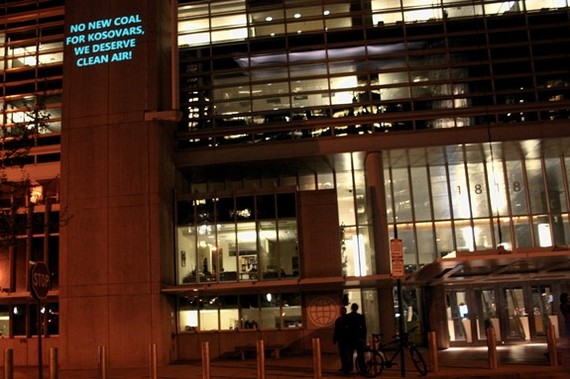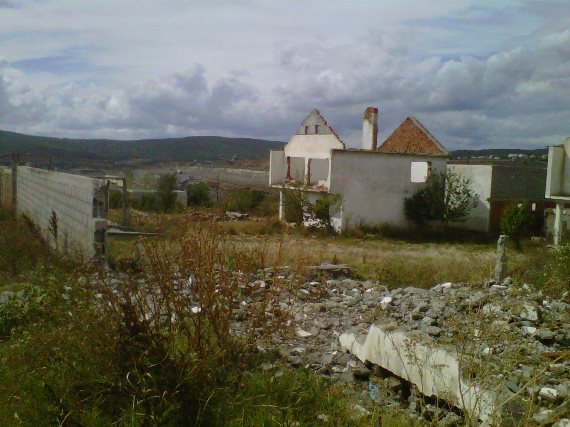Three years ago, I started urging World Bank officials to fund clean energy as an alternative to their plans to finance a new coal-based power plant in Kosovo. I was told that my "country could live with a Volkswagen as opposed to a Cadillac." This short-sighted thinking suggests that top-of-the-line clean energy development would be a luxury, but coal is the cheaper option that gets the job done. The social and environmental impacts and costs arising from coal did not seem to bother them much.
The World Bank's new coal plant in Kosovo is a highly controversial project. President Kim of the Bank has said that the Bank is considering this project to save Kosovars from "freezing to death" due to lack of energy. On the other hand, Civil Society Organizations there have called on the Bank to look at the other energy alternatives in the country, in light of many environmental and social externalities that come with a new dirty coal project, including premature deaths arising from coal pollution. The Bank has been deaf and rejected CSO calls.
A glimpse of hope?
Last week, the head of International Monetary Fund (IMF), Christine Lagarde, presented a new tool that aims at guiding countries on how to go about quantifying the harmful side effects of energy use. The hope is that over 150 countries world-wide will use this new tool to calculate the true and correct implications on energy prices of coal, natural gas, and gasoline. CSOs have been calling on the World Bank Group to develop such an assessment tool for many, many years.

Photo caption: Activists project their demand for clean energy in Kosovo on the World Bank HQ building (Photo credit: Nicole Ghio)
Energy use is critical for any development, but it can also result in excessive environmental and social negative effects, bearing huge costs to the economy. The atmospheric concentrations of carbon dioxide and other greenhouse gases are expected to raise global temperatures by about 3-4°C by the end of the century, posing considerable risks to reverse any human development. Furthermore, air pollution, primarily from fossil fuel combustion, causes more than 7 million premature deaths a year worldwide, according to World Health Organization. The costs associated with such pollution account for 1% of GDP in America to 4% of GDP in China. Again, these are costs that are almost never accounted for when developing dirty energy projects.
Even when such costs are known, they are never presented as an explicit cost to a project. For example, the World Bank looked into the impact of pollution on human health in Kosovo. Its findings show that 835 lives are lost prematurely in Kosovo due to pollution, almost half of which attributed to burning lignite for energy needs. On top of that, the report shows, Kosovars pay annually 100 million euros for their medical needs arising from such pollution. This was never presented as a cost that a new coal project in the country will bear. If such a direct link between pollution and costs is known, why not calculate it as part of a project development plan?
Besides not accounting for these environmental and social costs, many countries spend even more money to subsidize this dirty industry. As the IMF guiding policy tool points out, "...in practice, many countries, far from charging for environmental damage, actually subsidize the use of fossil fuels. For many others, energy taxes -- if currently implemented at all -- are often not well targeted at sources of environmental harm, nor set at levels that appropriately reflect environmental damage." This way of doing business is not sustainable and must end. It is exactly for these reasons that CSOs have called on the World Bank to reconsider its coal investments in Kosovo and lead the country into developing cleaner, safer and cheaper sources of energy. These sources are plentiful for a nation of only 1.7 million and already scientifically proven.
Most countries are not motivated politically or otherwise to get the energy pricing right. Guidance tools such as the one the IMF published can help countries see all the hidden costs and shift to a market where energy pricing reflects the real cost.
How to get it done
As the new IMF report points out, "The main challenge is how to get it done -- how to build support for energy price reform. International organizations and others have an important role to play, first in promoting dialogue about best practice, and second in providing solid analytical contributions quantifying the benefits of pricing policies relative to alternative approaches, and assessing distributional implications to inform the design of compensating measures." The World Bank Group must do exactly this and the first real test for them couldn't be more straight-forward: Kosovo.

Photo caption: Destroyed houses in Hade village in Kosovo making way to a new coal mine (Photo credit: Kate Geary)
Clean energy would help Kosovars' health and pockets and in turn would also help the Bank live up to its promises to act on climate and curb coal investments. The World Bank needs to do this systematically in the future. This true-cost analysis belongs in the World Bank Group's Safeguard policies that provide guidelines for social and environmental assessments for all projects. Once and for all, the world needs to be shown why dirty energy is more expensive than the top-of-the-line clean options. The World Bank, as a large international financial institution, should lead the way. Using the IMF guidance in its projects would be a good first step.
